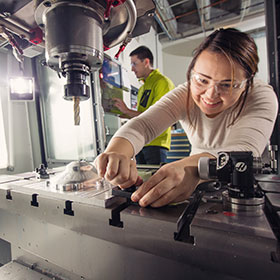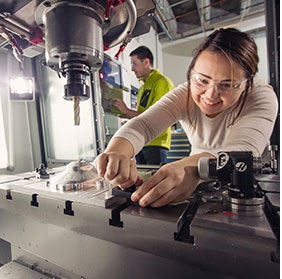
In the ever-evolving landscape of engineering, the realm of advanced materials and manufacturing stands as a pillar of innovation and progress. This fascinating field holds the promise of revolutionizing industries, from aerospace to electronics, by introducing novel materials and cutting-edge manufacturing techniques. Let’s dive into the world of advanced materials and manufacturing, uncovering its significance, applications, and the exciting possibilities it brings to the table.
Introduction: A Glimpse into the Future
The world of engineering is ceaselessly pushing boundaries, and at its forefront lies the domain of advanced materials and manufacturing. This realm represents a convergence of science, technology, and creativity, holding the key to unprecedented breakthroughs in various industries.
The Building Blocks: Understanding Advanced Materials
Advanced materials encompass a diverse array of substances engineered to possess remarkable properties that go beyond those of traditional materials. These materials, often on the nanoscale, are meticulously designed to exhibit characteristics like enhanced strength, durability, conductivity, and more.
Types of Advanced Materials
In this category, materials like nanomaterials, composites, shape-memory alloys, and conductive polymers take center stage. Each type brings forth unique attributes that open new avenues for innovation.
Properties that Redefine Possibilities
The properties of advanced materials have the potential to revolutionize industries. Imagine materials that are not only lighter than feather but stronger than steel, or substances that can conduct electricity with unparalleled efficiency. These properties are driving transformations in engineering and beyond.
The Art of Manufacturing at the Cutting Edge
The manufacturing landscape has undergone a seismic shift with the advent of advanced manufacturing techniques. Two groundbreaking methodologies are at the forefront of this transformation:
Additive Manufacturing: Shaping the Unconventional
Additive manufacturing, colloquially known as 3D printing, has turned traditional manufacturing on its head. By building layer upon layer, it offers unparalleled precision and the ability to create complex structures that were once deemed impossible.
Precision Engineering: Microscopic Marvels
The realm of advanced materials and manufacturing extends to the microscopic level. Precision engineering involves the creation of intricate components with nanoscale precision, enabling the development of cutting-edge electronics, medical devices, and more.

